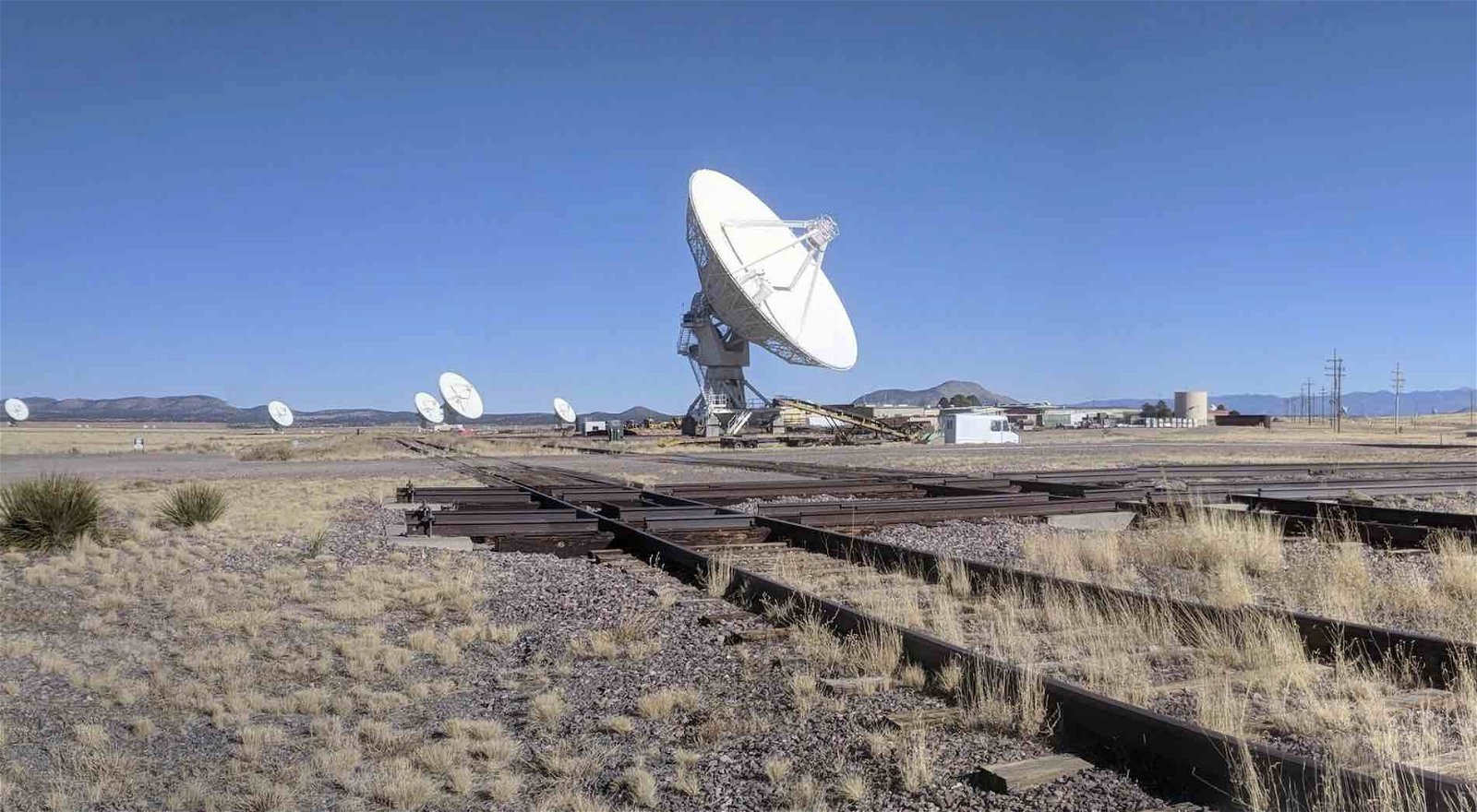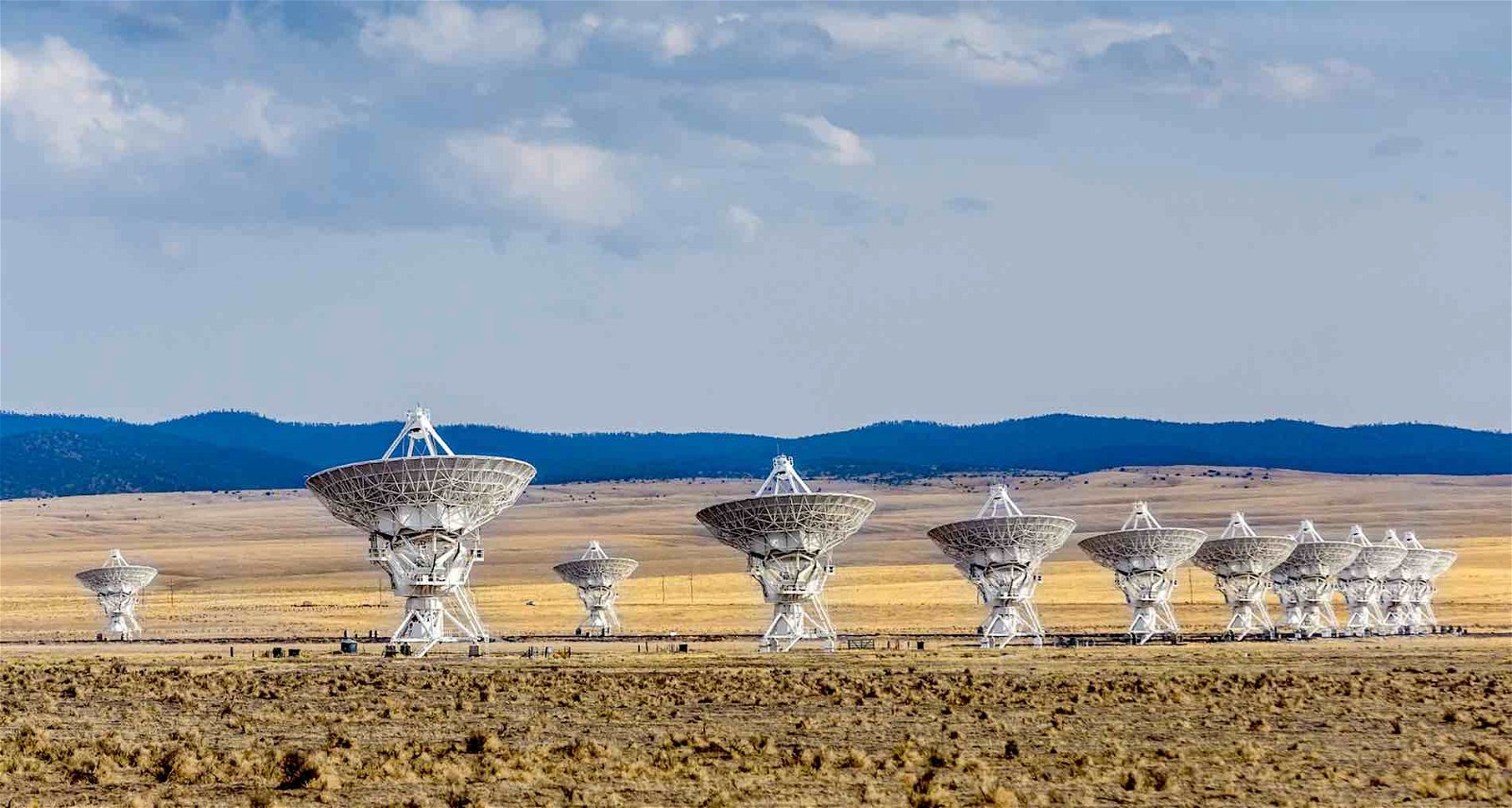The search for extraterrestrial intelligence (SETI) will soon be getting help from one of the world’s largest and most powerful radio telescope arrays, as scientists continue to scour the universe for evidence of extraterrestrials and their technologies.
Fifty miles west of Socorro, New Mexico, the Karl G. Jansky Very Large Array (VLA), a National Science Foundation facility, is now collecting data that SETI researchers say they will analyze in the search for emissions from distant artificial sources that a technological alien civilization might produce, according to a statement from the SETI Institute.
Founded in 1984, the SETI Institute has spent the last several decades as a leader in the scientific effort to resolve the question of whether humankind is alone in the universe. Primarily, SETI research relies on the monitoring of electromagnetic radiation that would result from transmissions produced by an alien civilization with technology comparable to our own.
Although SETI efforts began in the 80s, it has roots dating back to the early 20th century with radio technologies that SETI scientists still view as being viable means of potentially detecting any form of alien intelligence that could be out there.


Among the most active radio telescopes on Earth, the VLA consists of an array of 27 antennas that span a 23-mile stretch of the New Mexico desert. The Very Large Array Sky Survey (VLASS), an ongoing radio survey comprising close to 80 percent of the visible sky, has been carried out by the VLA since 2017.
Andrew Siemion, the Bernard M. Oliver Chair for SETI at the SETI Institute, called the VLA “the go-to instrument for radio astronomers,” although noting that the new collaboration marks its first use “in a wide-ranging and continuous search for technosignatures.”
Notably, the VLA’s efforts with SETI comprise a new processing system called the Commensal Open-Source Multimode Interferometer Cluster, or COSMIC, in a new SETI institute collaboration with the National Radio Astronomy Observatory and the Breakthrough Listen Initiative.
One of the beneficial functions of COSMIC is that it operates in the background while tapping information from data collected by astronomers for a range of different purposes.
“This is an ideal and very efficient way to get large amounts of telescope time to search for rare signals,” said VLA/VLBA Science Support Lead Paul Demorest, a scientist at the National Radio Astronomy Observatory.
With the addition of VLA, COSMIC is expected to be as much as 1000 times more comprehensive in its search for signs of alien technosignatures than past efforts, allowing a wider variety of transmissions to be detected than previous SETI searches have allowed. This includes the detection of transient and pulsed signals, representing what the SETI Institute characterizes as an “unprecedented” new effort in the search for extraterrestrial intelligence.
SETI Institute Senior Astronomer Seth Shostak says that as SETI efforts continue, by around 2024, efforts by its partners like the Breakthrough Listen Project will have analyzed close to a million star systems.
“That’s a big number,” Shostak told The Debrief last year. “Up until today, the total number of star systems looked at is under 10,000.”
“So I remain optimistic that if you do an experiment that keeps getting better, and you do it long enough, and there is something to your premise—that in this case, there are aliens out there with some technical capabilities—if you believe all that… then you’re gonna see something happen, in my opinion, in the next ten years,” Shostak told The Debrief.
Tony Beasley, Director of the National Radio Astronomy, said that its partnership with the SETI Institute will only further enhance those ongoing efforts.
“Partnerships bringing together world-class research instruments, private research institutes, and members of the public personally committed to forefront science can enable new important discoveries,” Beasley said in a statement.
Micah Hanks is the Editor-in-Chief and Co-Founder of The Debrief. He can be reached by email at micah@thedebrief.org. Follow his work at micahhanks.com and on Twitter: @MicahHanks.

